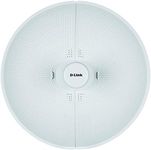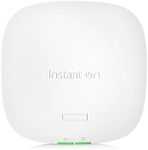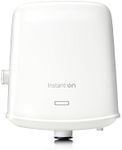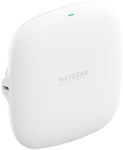Buying Guide for the Best Outdoor Access Points
Choosing the right outdoor access point is crucial for ensuring reliable and fast internet connectivity in outdoor environments. Whether you're setting up Wi-Fi for a large outdoor event, a park, or a business premises, understanding the key specifications will help you make an informed decision. Consider the environment where the access point will be installed, the number of users, and the type of activities they will be engaging in. This will guide you in selecting an access point that meets your needs effectively.RangeThe range of an outdoor access point refers to the distance over which it can provide a reliable Wi-Fi signal. This is important because it determines how far the signal can reach, which is crucial for covering large outdoor areas. Typically, ranges can vary from a few hundred meters to several kilometers. If you're covering a small area like a backyard, a shorter range might suffice. For larger areas like parks or campuses, you'll need an access point with a longer range. Consider the size of the area and any potential obstructions like trees or buildings that might affect signal strength.
WeatherproofingWeatherproofing is a measure of how well the access point can withstand outdoor conditions such as rain, wind, dust, and extreme temperatures. This is important because outdoor access points are exposed to the elements, and you want a device that can operate reliably in all weather conditions. Look for specifications like IP ratings, which indicate the level of protection against water and dust. If the access point will be installed in a harsh environment, choose one with a higher IP rating to ensure durability and longevity.
SpeedSpeed refers to the maximum data transfer rate that the access point can support, usually measured in megabits per second (Mbps) or gigabits per second (Gbps). This is important for ensuring fast and efficient internet connectivity, especially if multiple users are accessing the network simultaneously. Access points can offer speeds ranging from basic levels suitable for simple browsing to high speeds necessary for streaming and gaming. Consider the activities that will be performed on the network; for high-demand applications, opt for higher speeds to ensure smooth performance.
User CapacityUser capacity indicates the maximum number of devices that can connect to the access point simultaneously without degrading performance. This is crucial for environments where many people will be using the Wi-Fi, such as outdoor events or public spaces. Access points can support anywhere from a few dozen to several hundred users. If you expect a high number of users, choose an access point with a higher capacity to ensure everyone can connect without issues. Consider peak usage times and the types of devices that will be connecting.
Frequency BandsFrequency bands refer to the radio frequencies that the access point uses to transmit data, typically 2.4 GHz and 5 GHz. This is important because different bands offer different advantages; 2.4 GHz provides longer range but slower speeds, while 5 GHz offers faster speeds but shorter range. Dual-band access points can operate on both frequencies, providing flexibility and better performance. Consider the environment and the types of devices that will be connecting; if you need higher speeds and less interference, opt for a dual-band access point.
Security FeaturesSecurity features are measures that protect the network from unauthorized access and cyber threats. This is important for safeguarding sensitive data and ensuring user privacy. Look for access points that support advanced security protocols like WPA3, offer guest network options, and have built-in firewalls. If the network will be used for business or sensitive applications, prioritize robust security features to protect against potential breaches. Consider the level of security needed based on the type of data being transmitted and the potential risks.














